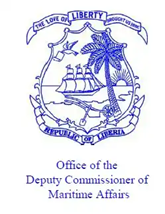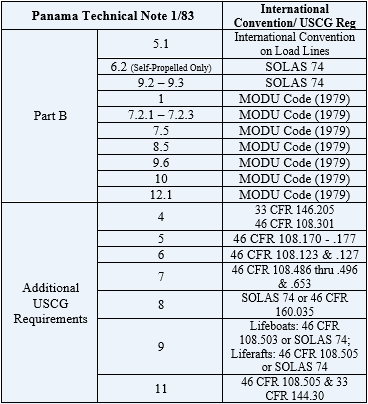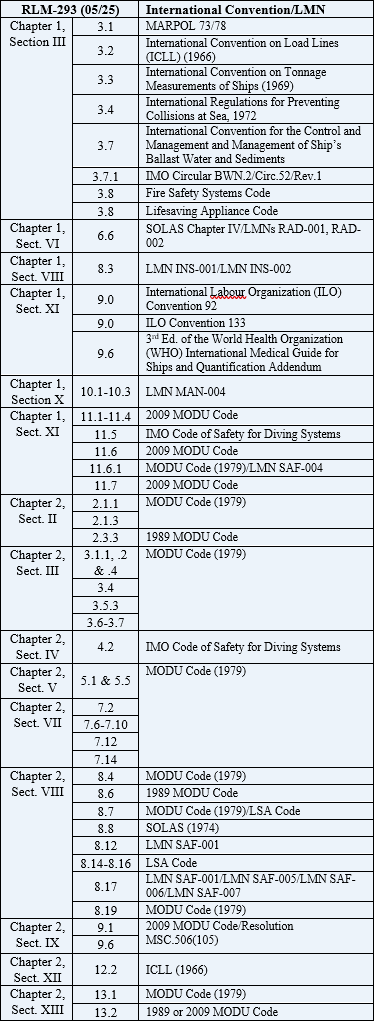The Drill Down, Issue #18: MODU Certificate of Compliance: Option "B" - A Closer Look
 Introduction
Introduction
A previous issue of the Drill Down explored the regulatory compliance options for foreign-flagged Mobile Offshore Drilling Units (MODUs) on the U.S. OCS (see Drill Down Issue #3-MODU). While these examination/compliance options are mostly self-explanatory, Option “B” has some intricacies that we will further clarify in this issue.
Option “B” Equivalencies
A Certificate of Compliance (COC), CG-3585, issued under the provisions of 33 CFR 143.207(b) (design & equipment) and/or 33 CFR 146.205(b) (operations), also known as Option “B”, allows for compliance with the standards of the MODU’s documenting nation, if the standards provide a level of safety generally equivalent to or greater than that provided under 46 CFR Parts 108 and 109. The Coast Guard had previously recognized the national standards of two Administrations, Panama and Marshall Islands, with the addition of a third, Liberia in 2025, as meeting Option B requirements.
Each equivalency discussed includes a reference table showing the parts of the national standards and the Conventions that apply to MODUs examined under Option “B” for the respective Administration.
International Conventions Referenced
Both Panama and Marshall Islands at different times refer out to International Conventions and U.S. Coast Guard regulations, while Liberia refers to International Conventions and Liberian Marine Notices
 Panama
Panama
The Republic of Panama’s rules for existing MODUs, as listed in Panama Technical Note 1/83, were accepted as equivalent to those provided under 46 CFR 108 by Commandant (G-MVI-4) letter dated June 9, 1986. This equivalency was granted for existing MODUs that could not comply with the IMO MODU Code (1979). Important factors regarding Panama’s equivalency:
- Applies only to MODUs built, under construction or contracted prior to April 5, 1982;
- The MODUs must hold a valid Panamanian MODU Safety Certificate issued under Technical Note 1/83;
- Exceptions are noted in Enclosure (1) to the acceptance letter and denote specific design & equipment requirements that must be complied with, in addition to Tech Note 1-83; and
- The equivalency only applies to 46 CFR Part 108 (design & equipment) and NOT to 46 CFR Part 109 for operational requirements; therefore, they must meet the requirements of 46 CFR 109 that were in effect according to the MODU build date.
Panama Technical Note 1/83 is broken down into three parts, as follows:
- Part “A”, which applies to all Panama flagged MODUs, provides Panama’s interpretation of certain sections of the 1979 MODU Code;
- Part “B”, which applies to existing Panama flagged MODUs and elaborates on the general principles which shall be used to establish the suitability of an existing Panama MODU to conduct international operations; and
“Requirements for Existing Panamanian Flag MODUs for Issuance of a USCG Letter of Compliance under 33 CFR 143.207(b)” that provides additional requirements for the USCG to issue the Letter of Compliance (superseded by a Certificate of Compliance that is currently issued).
 Marshall Islands
Marshall Islands
The Republic of the Marshall Islands’ Mobile Offshore Drilling Units Standards, Publication MI-293 (Rev. 8/00) was accepted as equivalent to both 46 CFR Parts 108 and 109 by Commandant (G-MOC) letter dated August 9, 2002. Like the earlier equivalency granted to Panama, Option “B” for Marshall Islands flagged MODUs only applies to units that were constructed prior to the implementation of the IMO MODU Code (1979). Important factors regarding Marshall Islands’ equivalency:
- Applies to MODUs constructed before December 31, 1981, for Option “B”; Part I of MI-293 defines these MODUs as existing units.
- MODUs constructed on or after December 31, 1981, and issued a Marshall Islands MODU Safety Certificate under the provisions of MI-293 are considered to be in compliance with Option “C” and are issued a COC for the same.
- Units must also meet the requirements of Enclosure (1) to the acceptance letter, “Supplement for Marshall Islands Flagged MODUs”.
- Unlike Panama, the equivalency applies to 46 CFR 108 (design & equipment) and 46 CFR 109 (operations).
- MI-293, Rev. 8/00 is the accepted publication; later revisions of the publication have not been reviewed or accepted by the Coast Guard.
Marshall Island’s MI-293 (Rev. 8/00) is broken down into six parts, as follows:
- Part I: General Requirements
- Part II: Definitions
- Part III: Applies to units meeting the 1989 MODU Code, as modified by the Interpretations of the MI administration in MI-293 and constructed on or after May 1, 1991. Compliant units are issued an International Mobile Drilling Unit Safety Certificate (1989).
- Part IV: Applies to units meeting the 1979 MODU Code, as modified by the interpretations of the MI Administration in MI-293 and constructed on or after December 31, 1981, and prior to May 1, 1991. Compliant units are issued an International Mobile Offshore Drilling Unit Safety Certificate (1979).
- Part V: Applies to units not meeting the 1979 or 1989 MODU Codes but do comply with the national requirements as outlined in this part. These units that are constructed prior to December 31, 1981, are issued an MI National Mobile Offshore Drilling Unit Document of Compliance.
- Part VI: Applies to all MI MODUs, regardless of which previous part applies. It lists the additional requirements for the issuance of the USCG Letter of Compliance (superseded by the Certificate of Compliance that is currently issued).
Liberia
The Republic of Liberia’s Mobile Offshore Unit Standards RLM-293 (Rev. 05/25) was accepted as equivalent to both 46 CFR Parts 108 and 109 by Commandant (CG-ENG) letter dated July 24, 2025. Like previously accepted equivalencies, it only applies to units that were constructed prior to the implementation of the IMO MODU Code (1979). Important factors regarding Liberia’s equivalency:
- Applies to MODUs constructed before December 31, 1981.
- Does NOT apply to self-propelled MODUs.
- Units must also meet the requirements found in paragraph 3 of the approval letter.
Liberia’s RLM-293 is broken into six chapters, as follows:
- Chapter I: applies to all Liberian flagged MOUs;
- Chapter II: Requirements for Mobile Offshore Drilling Units that do Not Meet the 1979, 1989, or 2009 MODU Code;
- Chapter III: Requirements for Compliance with the 1979 MODU Code;
- Chapter IV: Requirements for Compliance with the 1989 MODU Code;
- Chapter V: Requirements for Compliance with the 20009 MODU Code; and
- Chapter VI: Requirements for Mobile Offshore Units.
RLM-293 refers to Liberian Marine Notices (LMNs). These LMNs provide guidance from Liberia on the topic of the notice. See table for the LMNs referenced in the acceptance
Conclusion
Although there are large time lapses between these three equivalency aceptances, it is crucial to note that all standards are only accepted for MODUs that were pre-existing, or under construction, prior to the implementation of the IMO MODU Code (1979). Implementation dates are set by the respective Administrations but all MODUs built after the dates listed in the approval letters will be examined and have a COC issued as either Option “A” or Option “C” (see Drill Down Issue #3-MODU for further explanation of these two options).
Reference Tables
The tables below show parts of the national standards and the Conventions that apply to MODUs examined under Option “B” for Panama, Marshall Islands and Liberia.
Panama Reference Table:

Marshall Islands Reference Table:

Liberia Reference Tables:


Revised 08Sep2025 to include USCG's 2025 acceptance of Republic of Liberia equivalency.